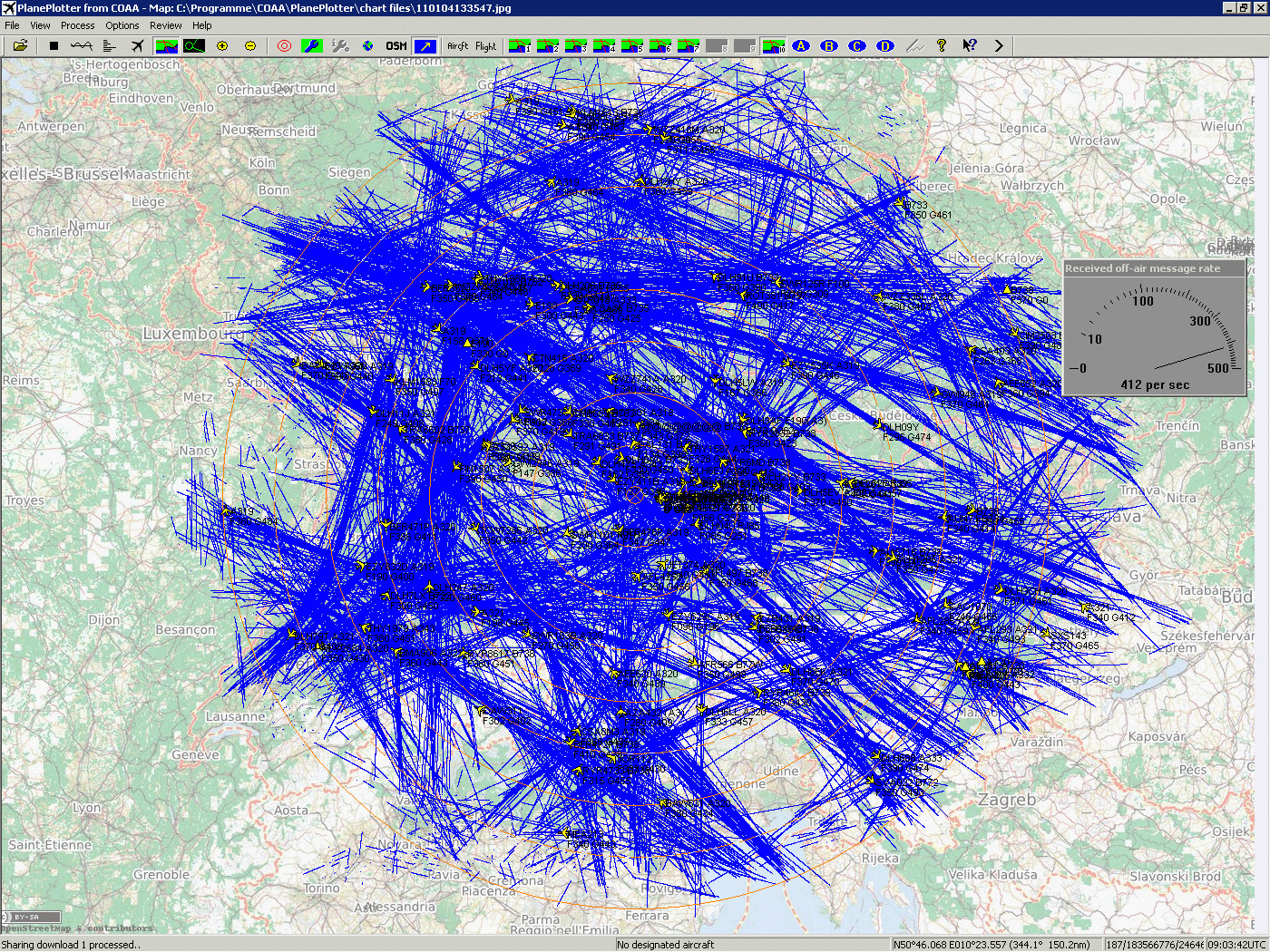

The grep command tells it to only log lines that have a comma followed by two digits, a dot and another digit and ignore lines that don’t have that.
#PLANEPLOTTER SPRUT MAC#
I’m on a Mac and I’m using the quick and dirty command below (replace the x’s with your PiAware’s IP). If you can pre-filter to log only those entries with lat/lon then even better.

Start logging the data as per the earlier posts in this thread. Since then I had a 250+ mile entry appear on the coverage graph but when I checked the map there was no sign of it, so, in that case at least, I suspect it was bad data. $ telnet 192.168.0.100 30003 > ~/Desktop/log.csvīased on these logs I’ve worked out a way to visualise the positions received. For those with some advanced grep/sed/awk knowledge it should be easy to enter a single command to filter the logs to only show those aircraft outside of a 250 mile width square box centered on your location, and that would avoid any need for a spreadsheet at all.įor reference on the Mac, logging to a file called log.csv on the user’s desktop, with PiAware on the 192.168 address shown:
#PLANEPLOTTER SPRUT HOW TO#
If this works I will post a followup which explains how to do it step by step. I can then look up the data and timestamp from the other columns to confirm the aircraft’s position. If there is one then I can pull that data into a spreadsheet and sort it by columns O or P which will immediately show positional outliers. If there is none then I can quit the logging and restart it to abandon the data collected and start afresh. Periodically I can check the radarscope for a 250+ miler. Thanks actually I think it’s exactly what I’m looking for! I can use that to log to a csv continuously. Anyone got any suggestions on how to track down these elusive 250+ aircraft? Thanks. I’ve scoured the forums and web but can’t find anyone asking about recording over the network or enabling some logging solution. I’d like to find a better method that isn’t so painful. If I see a 250+ miler I can then review the recording and try to find it. I could leave Skyview on display with the table reverse-sorted by distance, and then use Quicktime to constantly screen-record that top portion of the table. There is a crude hack which could be used. Is there any way I can see the position details after the fact? For example can I run something on another computer which is logging data over the local network from PiAware? I’m running stock PiAware 3.5.3. I have a couple of Skyview screens open, one of which is zoomed out and reverse-sorted by distance, but it’s not ideal since I will have to happen to be looking at it during the 58 seconds that the position is in the table. If the former I’d love to be able to see where on the map where I picked them up from. I’d like to be able to see the details for those so I can establish if I’m seeing a real aircraft via an atmospheric effect or whether it’s just bad data. My stats page radar usually shows 1 or 2 positions per day supposedly received from 250+ miles out.


 0 kommentar(er)
0 kommentar(er)
